The Everest Base Camp Trekking adventure spans 12 days, leading trekkers through the breathtaking Khumbu region of Nepal. This journey covers 130 kilometers, offering not just stunning landscapes but also rich cultural experiences in Sherpa villages. With highlights like the sunrise at Kala Patthar and the serene Tengboche Monastery, the trek promises a unique blend of challenge and beauty. Those considering this trek will find it essential to understand the itinerary and preparation needed to ensure a safe and enjoyable experience. But what are the key factors to keep in mind before setting off?
Key Points
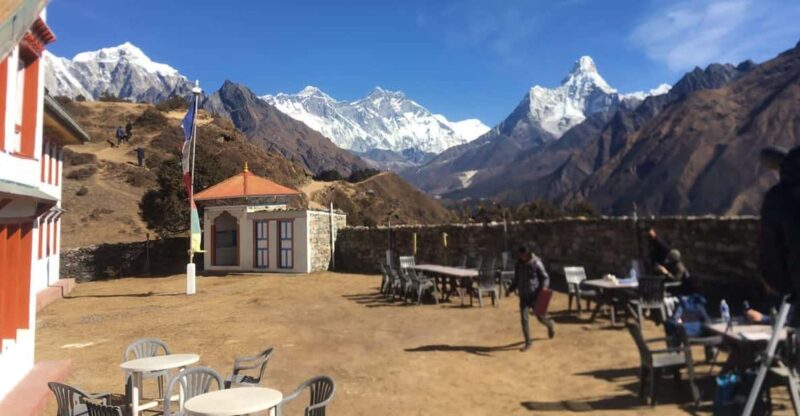
- The 12-day Everest Base Camp trek covers 130 kilometers, reaching an altitude of 5,554 meters at Everest Base Camp.
- The itinerary includes culture in Sherpa villages and highlights such as Tengboche Monastery and sunrise views from Kala Patthar.
- Daily meals and accommodations are provided, with experienced English-speaking guides ensuring a safe trekking experience.
- Essential gear includes sturdy hiking boots, moisture-wicking clothing, and quality sleeping bags for comfort in cold temperatures.
- Trekkers must prioritize health by staying hydrated, monitoring for altitude sickness, and adhering to environmental conservation practices.
Overview of the Trek
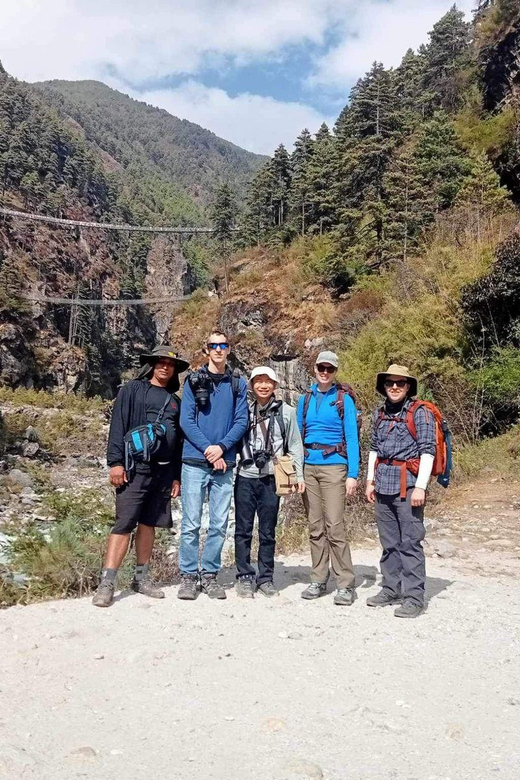
The Everest Base Camp Trek offers adventurers a thrilling 12-day journey through the breathtaking Khumbu region of Nepal, culminating at an impressive altitude of 5,554 meters.
Spanning a total distance of 130 kilometers, this trek immerses trekkers in stunning landscapes and rich culture. Along the way, they’ll traverse picturesque Sherpa villages, where the warmth and hospitality of the locals shine.
Highlights include the iconic views from Kala Patthar, an unforgettable sunrise experience, and a visit to the Tengboche monastery, a spiritual gem nestled in the mountains.
Reaching Everest Base Camp itself stands as a testament to the trekker’s perseverance and determination, making this experience a bucket list adventure for many outdoor enthusiasts.
You can also read our reviews of more hiking tours in Namche Bazar
Detailed Itinerary
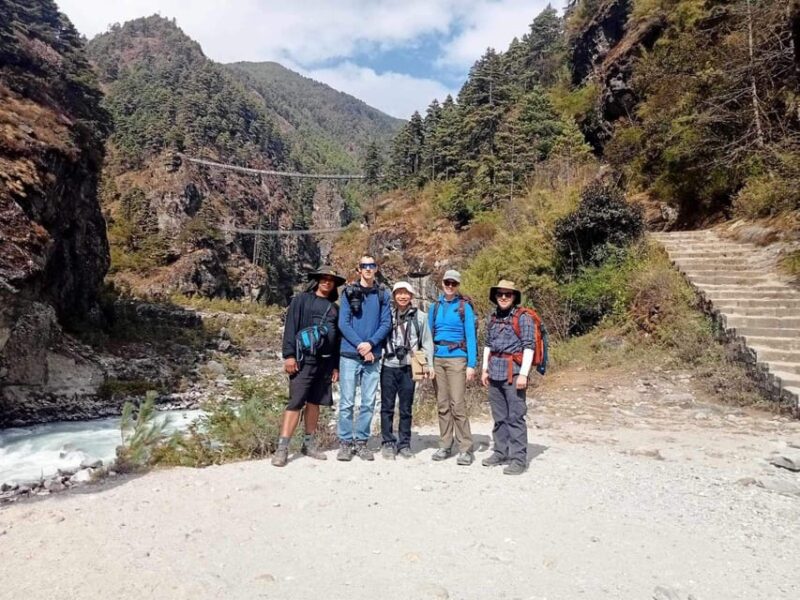
Embarking on the Everest Base Camp Trek involves a carefully crafted 12-day itinerary that balances adventure with acclimatization to the high-altitude environment. Each day is designed to enhance the trekking experience while ensuring safety and comfort.
-
Day 1: Arrive in Lukla after a scenic flight from Kathmandu.
-
Days 2-3: Explore Namche Bazaar, acclimatize, and enjoy local culture.
-
Days 4-5: Visit the famous Tengboche Monastery and hike scenic trails.
-
Days 10-11: Experience breathtaking sunrise views from Kala Patthar before trekking back.
With this structured plan, trekkers find themselves immersed in the stunning landscapes and rich Sherpa culture, making every moment of the journey unforgettable.
Trekking Inclusions

Trekking the Everest Base Camp offers a range of inclusions designed to enhance the experience and ensure trekkers are well-prepared for their adventure. These inclusions cover essential services and equipment, making the journey smoother and more enjoyable.
| Inclusions | Description |
|---|---|
| Airport Pickup/Drop-off | Convenient transport to and from the airport |
| Flights to Lukla | Round-trip flights between Kathmandu and Lukla |
| Meals | Daily breakfast, lunch, dinner, and tea/coffee |
| Accommodations | Stay in family-friendly hotels along the route |
| Licensed Guide | Experienced English-speaking trekking guide |
With these inclusions, trekkers can focus on the breathtaking scenery and cultural experiences without worrying about logistics.
Exclusions and Costs

Understanding the exclusions and costs associated with the Everest Base Camp trek helps trekkers budget effectively and prepare for unexpected expenses. While the package covers many essentials, several costs fall outside that scope.
Here are four key exclusions to keep in mind:
-
International airfare and visa charges: Trekkers must arrange and pay for their flights to Nepal and any necessary visas.
-
Hotel expenses in Kathmandu: Accommodation before and after the trek isn’t included.
-
Personal expenses: Costs like shopping, bar bills, hot showers, and laundry can add up.
-
Travel and medical insurance: Trekkers need to secure their own insurance for emergencies or cancellations.
Being aware of these exclusions ensures a smoother trekking experience.
More Great Tours NearbyPreparing for the Trek
Preparation for the Everest Base Camp trek requires careful planning and the right gear to ensure a safe and enjoyable adventure.
First, trekkers should invest in sturdy hiking boots and moisture-wicking clothing to stay comfortable on the trail. Layering is essential, as temperatures can vary greatly throughout the day. A good-quality sleeping bag rated for cold temperatures is also crucial for a restful night.
Plus, trekkers need trekking poles for stability and a daypack to carry essentials like water, snacks, and a first aid kit. Don’t forget to bring a reusable water bottle to stay hydrated.
Health and Safety Tips
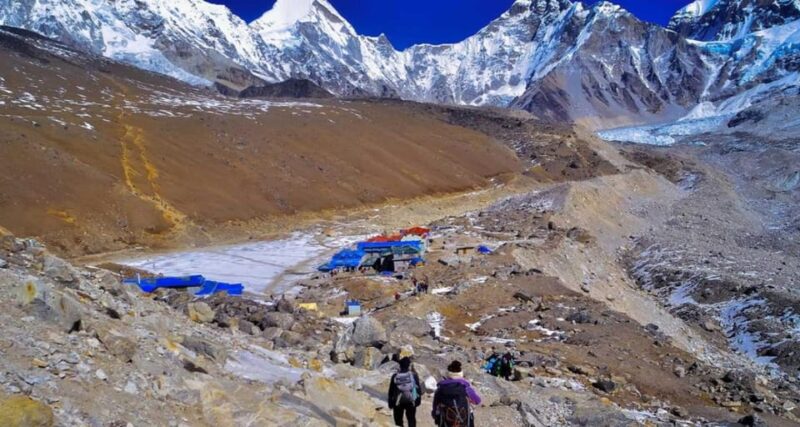
Staying healthy and safe during the Everest Base Camp trek is vital, so trekkers should prioritize proper acclimatization and hydration throughout their journey.
To ensure a successful trek, they can follow these essential health and safety tips:
-
Hydrate Frequently: Drink plenty of water, aiming for at least 3-4 liters daily to prevent altitude sickness.
-
Listen to Your Body: Pay attention to any signs of discomfort or altitude sickness, and don’t hesitate to descend if needed.
-
Eat Nutritious Meals: Fuel the body with balanced meals to maintain energy levels and support acclimatization.
-
Rest Adequately: Allow for proper rest days, especially during acclimatization stops, to help the body adjust to higher altitudes.
Essential Gear Checklist
Trekkers should pack essential gear to ensure a comfortable and successful journey to Everest Base Camp. Proper equipment can make all the difference in navigating the challenging terrain and unpredictable weather. Here’s a quick checklist:
| Clothing | Footwear | Accessories |
|---|---|---|
| Thermal base layers | Sturdy trekking boots | Sunglasses |
| Insulated jacket | Gaiters | Trekking poles |
| Waterproof shell jacket | Camp shoes | Warm hat and gloves |
Environmental Considerations
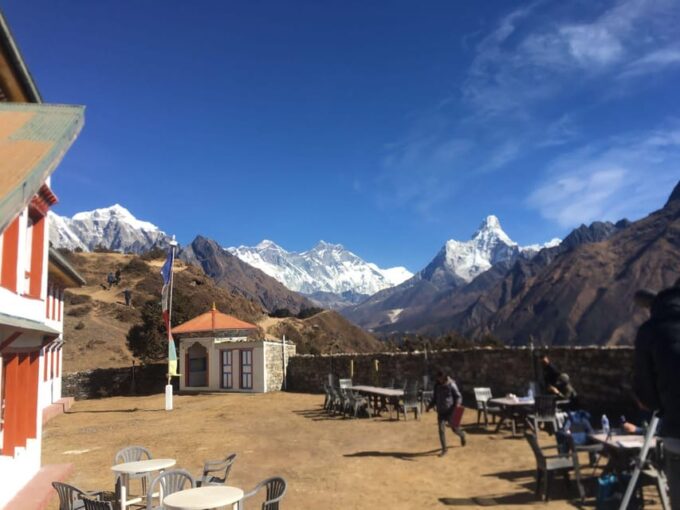
Packing the right gear is just the first step; being mindful of environmental considerations is vital for preserving the stunning landscapes trekkers will encounter on their journey to Everest Base Camp.
Trekkers can play an essential role in protecting this beautiful region by following a few simple guidelines:
-
Leave No Trace: Carry out all trash, including food wrappers and waste.
-
Stay on Trails: Stick to established paths to minimize environmental impact.
-
Use Biodegradable Products: Opt for eco-friendly soap and toiletries to protect local water sources.
-
Respect Wildlife: Observe animals from a distance and avoid feeding them.
Frequently Asked Questions
What Is the Best Time to Trek to Everest Base Camp?
For the best trekking experience, he recommends visiting during spring (March to May) or autumn (September to November). These months offer clear skies, mild temperatures, and stunning views, making the trek both enjoyable and memorable.
How Physically Fit Do I Need to Be for This Trek?
For this trek, one’s fitness level matters. They should maintain a moderate fitness routine, including cardio and strength training. Regular hiking practice will help acclimatize and build stamina for the challenging terrain ahead.
Are There ATMS Available Along the Trekking Route?
Along the trekking route, there’re limited ATMs. Most trekkers withdraw cash in Kathmandu before starting. It’s wise to carry enough cash for expenses, as options for withdrawals become scarce in remote areas.
Can I Charge My Electronic Devices During the Trek?
During the trek, charging electronic devices isn’t always possible. Most lodges offer limited electricity, often requiring a small fee. It’s wise to carry a portable charger for reliable power throughout the journey.
What Language Is Primarily Spoken by Local Guides?
The local guides primarily speak English, ensuring clear communication with trekkers. They’re trained to provide information about the region, culture, and safety, making the experience enjoyable and informative for everyone involved.
Recap
To sum it up, the Everest Base Camp Trek is an unforgettable adventure that combines stunning landscapes with rich cultural experiences.
Over 12 days, trekkers can push their limits while enjoying the support of experienced guides.
With proper preparation and a focus on health and safety, anyone can embrace the beauty of the Himalayas.
So, lace up those hiking boots, gather the essential gear, and get ready for the journey of a lifetime in the heart of Nepal!
You can check availability for your dates here:More Hiking & Trekking Tours in Namche Bazar
More Tour Reviews in Namche Bazar
Not for you? Here's more nearby things to do in Namche Bazar we have reviewed
- Everest Base Camp Trek – 12 Days Guided Trek
- Lobuche Peak Climbing 2025/2026
- Everest Panorama Trek-10 Days
- Lobuche Peak Climbing with EBC TREK-18 Days
- Everest Base Camp, Cho-La Pass, and Gokyo Trek
- Guided: Everest Base Camp Trek
- Pokhara: 11-Day Everest Base Camp Trek
- Everest Base Camp Trek
- Everest: 6-Day Panorama Trek
- 12 days Everest Base Camp Trek
- 5-Day Everest Tour with Breakfast at Everest View Hotel
- 8 DAYS EVEREST PANORAMA VIEW TREK FROM KATHMANDU
